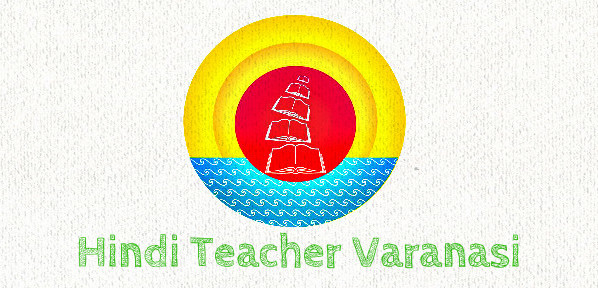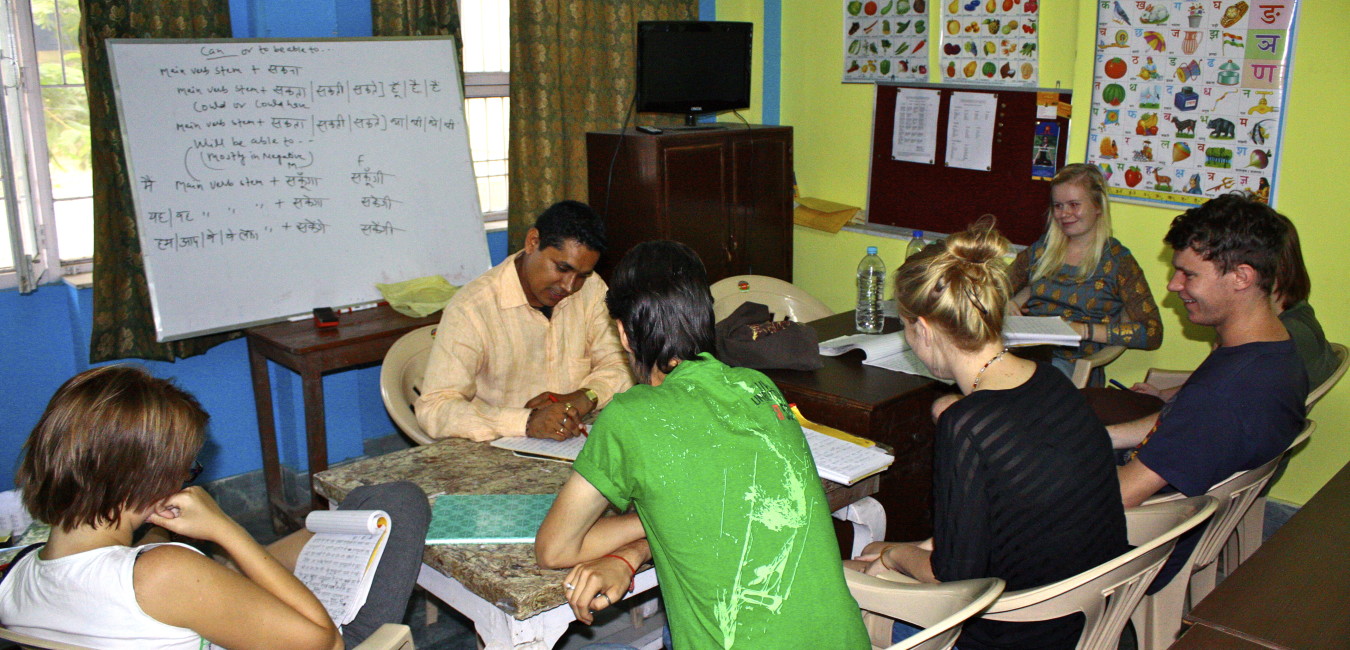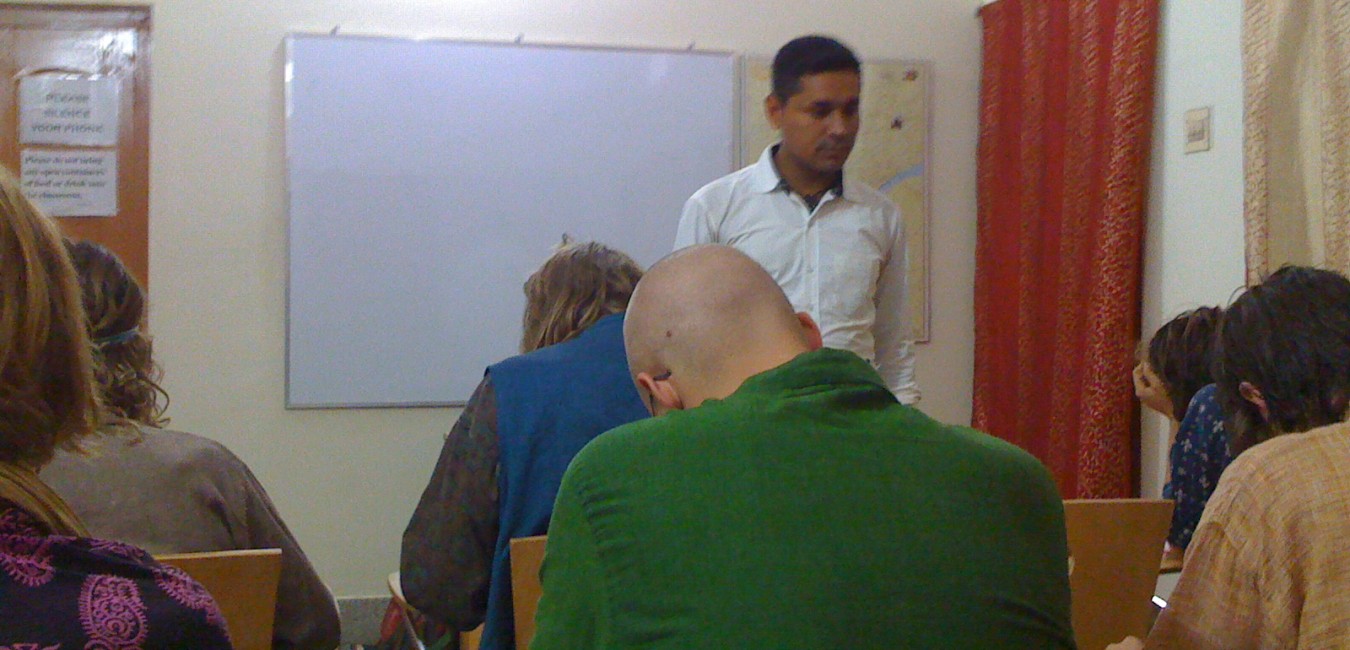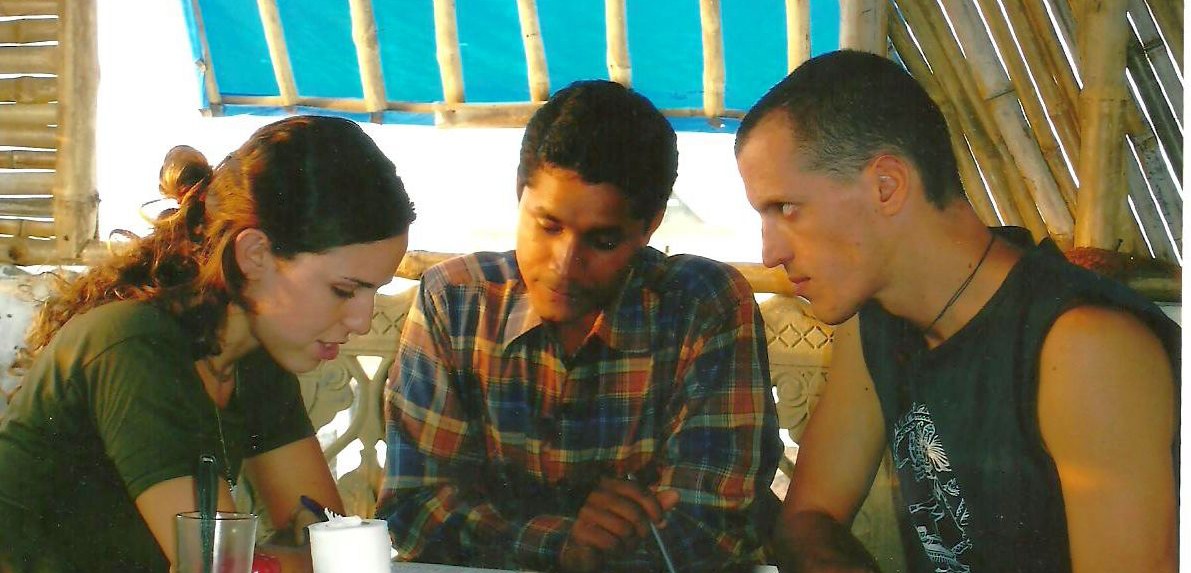Of the nine official languages of India, Hindi is certainly the most commonly spoken language in the North. There are said to be over 300 distinct languages and over 1,000 different dialects in this land. In most tourist and business areas, some level of English is normally spoken; often not enough to carry on a satisfying conversation, but enough to communicate bare necessities. If you want to spend an extended time in North India, Hindi is the language to learn.
The Hindi language is extremely expressive and is a very rich language. Learning such a language is a rewarding and fascinating experience that will open countless doors to understanding this diverse land and its culture.
When you talk to a Hindi speaker, they will tell you that the Hindi language is a simple language; they don’t speak truth! But be encouraged, there are more difficult languages for the English speaking people to master. For example, some of the East Asian languages are tonal (where the meaning changes when the same sound is pronounced with a high, low, raising, falling or other tone).
On the other hand, Hindi does offer its share of challenges. There are a number of letters or sounds that occur in Hindi that do not occur in the English language, so a bit of work is required to speak and hear some of these sounds. Probably the most notable to the western ear and tongue are the ‘r’, ‘t’ and ‘d’ sounds. There are three different sounds that sound like ‘r’, four ‘t’s and four ‘d’s. At first all sound much too similar. With practice they can be differentiated and mastered.
Perhaps the best thing in pronouncing and learning the Hindi language is that the alphabet is entirely phonetic (each character has a unique pronunciation), and the alphabet is very logically organized for pronunciation (See “Devanagari Alphabet” page). Once the alphabet has been learned, one can fairly quickly and accurately read and pronounce Hindi.
![[Hindi Alphabet]](http://hinditeachervaranasi.blog.co.in/wp-admin/alph.jpg)
Hindi grammar is another story. It might be best described by an American as inside-out from English. Just like in English, in Hindi the subject (what you are talking about) normally comes first, after this will be any clauses that modify the sentence, prepositions come after the word they modify (‘post-positions’), and finally at the end of the sentence is the verb. For example, in English you might say, “the boy plays the drum in the room.” In Hindi you would say, “larka kamere me tabla bajata hai” (boy room in drum plays).
This isn’t too difficult in itself, but when you begin creating longer sentences it gets a bit more difficult to translate. What is even more complicated for the English speaker is that all nouns are assigned a gender: masculine or feminine (often seemingly arbitrarily), and the various parts of the sentence must be modified to agree with the gender of the nouns that are used. As such, the verbs are modified to agree with the subject (or in many cases the object) of the sentence, and then modified to reflect the particular voice, mood or tense. Any verb might be presented in dozens of different forms.
Don’t be discouraged, it really isn’t that bad…after all, it is only a matter of practice and work. Working with a good language school or tutor, the average person can handle rudimentary Hindi in a few short months.
MORE ABOUT HINDI
The meaning of word Hindi: Hindi is a word from Farsi language of Sanskrit change to “H” which is the farsi language of north western part of India. Therefore people who settled down from the north west part of India called the sindhu river as “Hindu” and eastern part of this river is known as Hindi. From this Hindi and Hindu word came to existence. The meaning of farsi word Hindi who belong to hind means Bharat thus one more meaning for Hindi came for Indian. As the language of China is chinese, the language of France is french in the same way language of Hindustani is Hindi.
Thus Hindi is accepted as the language of native speaker. This word has two way of explanation
Limited Meaning: These days Hindi is just what we speak as khari boli. Hindi is the national language of India or it can be also said that it is means of getting education
Expanded Meaning: In expanded meaning Hindi is not having the limitation which is spoken from Himalaya in north, Rajasthan in south and in west from Delhi to Punjab and in the east till jharkhand and it is said that after every 400 miles the water changes and so does the language. In such a big long country there must be other some other dialect. These are basically different between the pronunciation but all these language are the just different stem of a plant. There are many way of pronouncing of a particular word for example in standard Hindi Ghora, in Awadhi Ghor and in Bhojpuri Bhorgwa. Even in the grammar these are not much difference in way of speaking. That is why scholars have accepted many style from Delhi, Uttar Pradesh ,Uttarakhand, Bihar And Rajasthan.
The present Hindi is having three different style
Khari boli hindi:- In the modern age of Hindi literature text was started therefore khari boli was accepted. Slowly and gradually it took place in poetry also. Khari boli which is written in Devanagari script is known as Hindi
Khari boli urdu: –In India the Muslim ruler used a language to communicate with each other was known as Urdu. The meaning of Urdu therefore believed as a creation of language between Hindus and Muslims for exchanging their ideas. Some people believe that Urdu was created in a fort of Delhi or king’s palace. Whatever it may be it is certain that khari boli is the backbone of the Urdu.
If the word from Arab and Farsi will be finished and script of the farsi then there will not be difference between khari boli and Urdu. Even in the grammar there is less difference between these two language .if it is said in hindi sentence “Mujhko awasar nahi mila “so is the urdu “Mujhko moka nahi mila” – meaning i did not get opportunity. This is the reason that many great scholar do not accept Urdu as a independent language since it is style of khari boli
Hindustani : -This name was given by European. In the beginning it’s meaning used to be Urdu but some middle period people gave the new name which is mixture of both language as Hindustani. The explanation of Hindustani is it is the language which is made of Hindi and Urdu. It is also a style of Hindi literature.
Sub language Of Hindi Language : -Dr Griyasen has counted eight dialect and believed them in two important class. These are western Hindi and eastern Hindi
Five important sub language of Hindi these are as follows and their dialect
Western Hindi:- Khari boli, Brajbhasa, Bangru, Kannoj, Bundeli
Eastern Hindi:- Awadhi, Bagheli, Chhatisgarhi
Bihari:- Maithilki, Magahi, Bhojpuri
Rajasthan:- Marwari, Malwi, Mewati,Jaipuri, shekhwati
Pahari:- Eastern pahari(Nepali) v Central Pahari (Mountain Side)
Development Of Hindi
It is believe that in 1000 century Hindi literature composition was started. Pundit Rahul Sankrityayan believes that history of Hindi language started in 7th century. According to Dr. Dhirendra Verna there is quite similiarly among the dialect of 16 district which are kashi (Varanasi), kosal, kuru, panchal, Magadh, Videh, Angetc. since 1000 century till date there is three development period of Hindi language:
Ancient period or Age (1000 century to 1500 century):- In ancient period when Hindi was started that time Hindu kingdom north India was waiting for their end. Kingdom of Delhi, Ajmer, Kannoj and Mahoba were very famous for their heroism and in these kingdom hindi literature got good position. The poetry of Amir Khusro, Sarfuddin Ahia Maneri, Sekh pharid started in this period only. This was called “HINDUI” and same form of this was called “DAKKANI” in south india. It was started after 1326 century. In the same age Vidyapati composed his poetry in maithili language. Thus composition oh hindi hindi language started in this age only.
Central Period or Middle Age (1500 century to 1800 century):- In this period Awadhi and Braj Bhasa was developed. Awadhi came to existence first time by Sufism poet. Ramcharitramanas was also written in this language by Tulsi Das which is great epic of Hindi literature. Tulsidas also composed other poetic in this language. Brajbhasaplayed great role for the life of lord Krishna. In Braj Bhasa sursagar of surdas is very important. Tulsi Das has also written Gitanjalee ,Vinaypatrika in this language. It is believe that there was no many composition in khari boli literature.
Modern Period or Present time (1800 century till today) :- In the fall of 19th century British established Fort Viliyam college kolkata started to compose text in khari hindi. There was great role of Kristian missionary in developing the prose in khari boli. Today the literaly form of khari boli is called hindi. This is the national language of India and it is spoken now most of the states therefore it is communicative language.










Pingback: Sz -Huei Wang
Pingback: Lily Adler